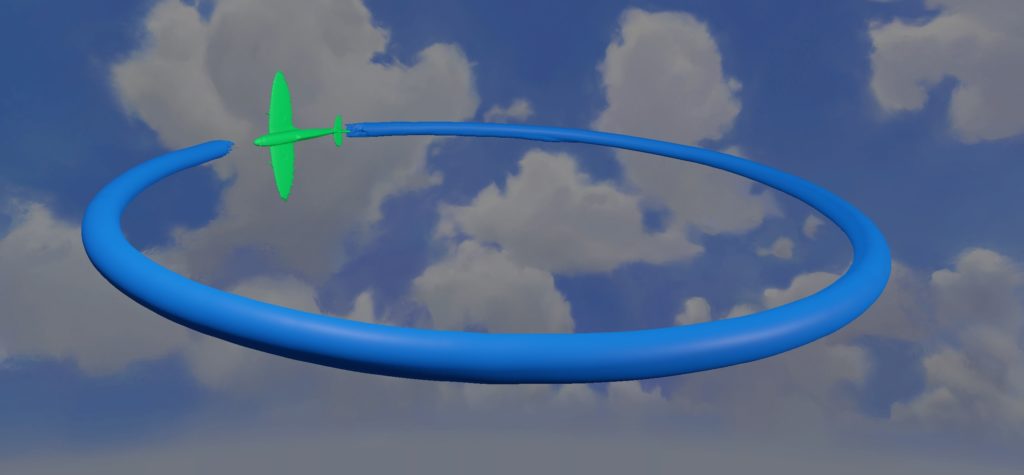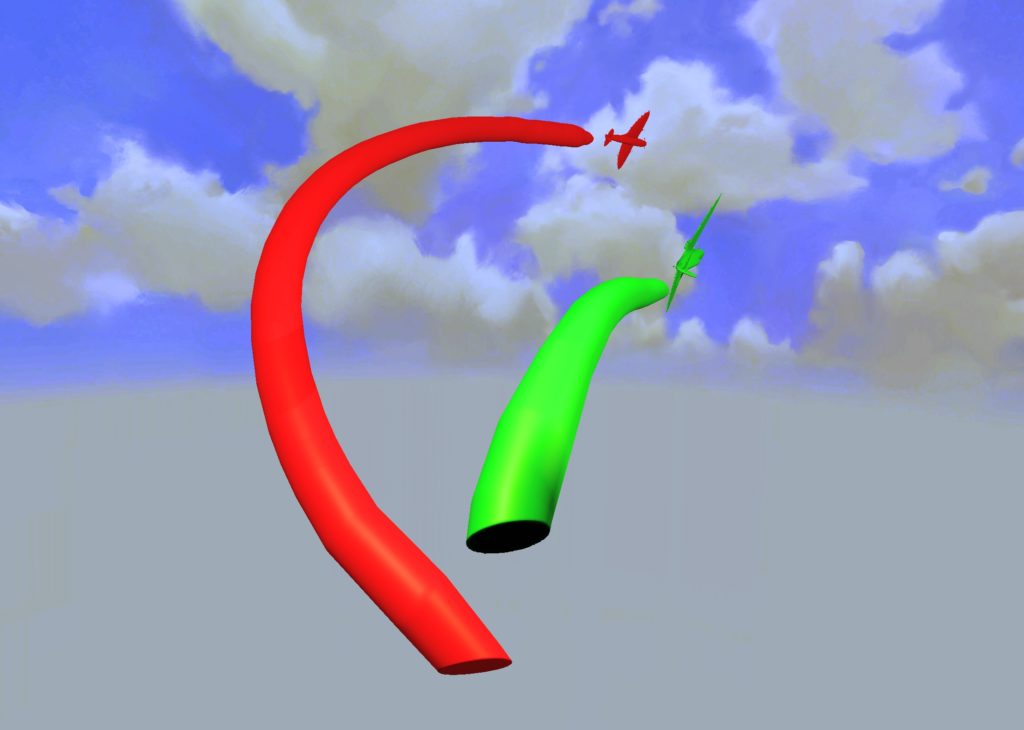Now that we have discussed Lift Vector and Velocity Vector we are ready to begin the skill building process that will make you a successful fighter pilot.
Step 1: See the target aircraft. The target aircraft may be an enemy we desire to kill or a friend we want to support. The process is the same. We have to see our target before we can maneuver in relation to the target.
Step 2: Apply pursuit curves in order to arrive on the target’s turn circle.
So we must define the turn circle. The turn circle is the circle described by the target aircraft should he turn at maximum performance in a single plane of motion. This circle may be horizontal, vertical or at an oblique angle (any angle between vertical and horizontal.

Step 3: Once we arrive at the target aircraft turn circle, we must apply the maneuvers required to remain on the target aircraft turn circle in an offensive position (in the case of a bandit aircraft and sometimes a friendly)
We will start with the assumption that we have a tally on the target aircraft.
Now we must fly so as to arrive on his turn circle. This is where pursuit curves are employed. Pursuit curves are the control of our velocity vector so as to arrive on the target turn circle and control our closure velocity (closure velocity is the difference in the relative velocity of our aircraft and the target. In simple terms, “How fast are we getting closer together or further apart”) We will shorten closure velocity to “closure” for simplicity. We will ALWAYS be concerned with closure. It is of primary importance on offense and defense, which you will quickly learn.

There are three pursuit curves: Lead pursuit or “lead”, Pure pursuit or “Pure”,and lag pursuit or “lag”. These terms describe the position of the velocity vector of the subject aircraft. Lead pursuit is placing your velocity vector to point at the predicted FUTURE position of the target. Generally, this is ahead of the target. Pure pursuit is placing your velocity vector (I.e. pointing your nose) at the target aircraft. Point where he is now. Lag pursuit is pointing the nose where the target was in the past. This is also called “flying to the elbow”.
That may seem like a strange name but it makes perfect sense. When two fighter pilots describe a fight to each other, they use their hands to represent the aircraft. Lag pursuit is when one hand is pointed at the elbow connected to the other hand. “Flying to the elbow” is a very handy tactic, especially against a zooming bandit.

Lead Pursuit
Lead pursuit is how you get closer to the target. Cut him off at the pass, cut inside his turn, go across his circle, take a shortcut. These are all real world expressions of the concept of lead pursuit. The green airplane is flying a lead pursuit path to get closer to the red airplane.

Lag Pursuit
Lag pursuit is used to reduce closure and decrease your angle off the targets tail. lag pursuit is what you are doing when you drop into trail position behind the target.

Pure Pursuit
Pure pursuit does everything lead pursuit does, only slower. Normally, pure pursuit is a transition state from lead to lag and vice versa.
